|
Casio PF-8000  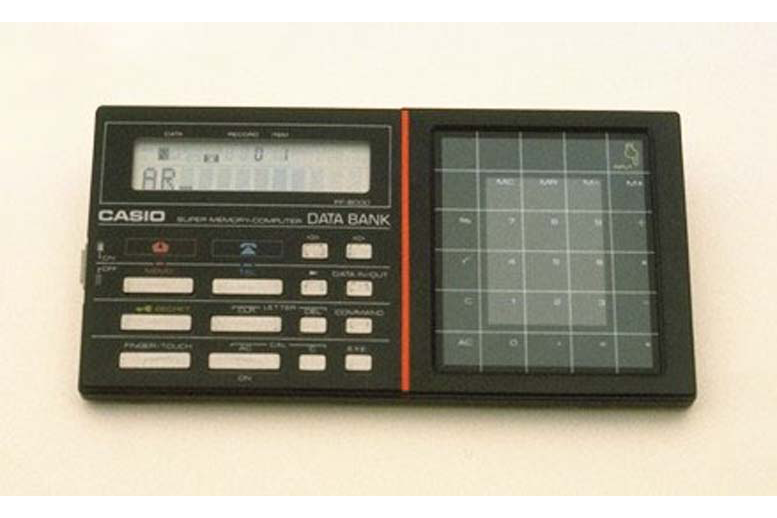 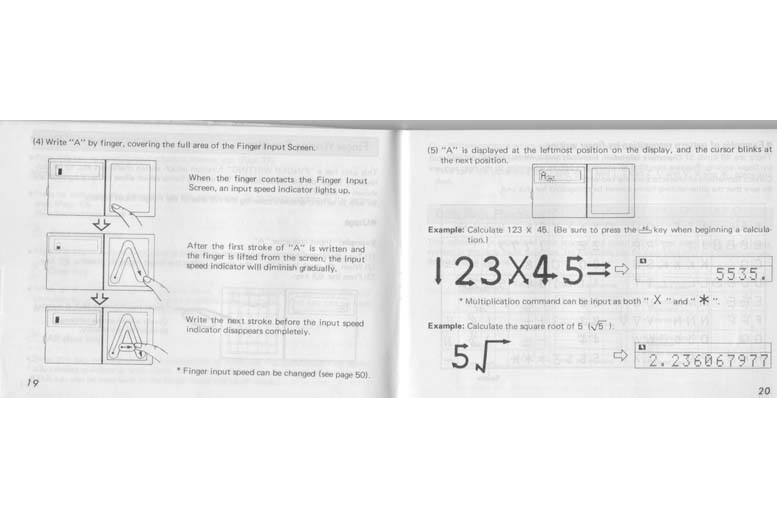 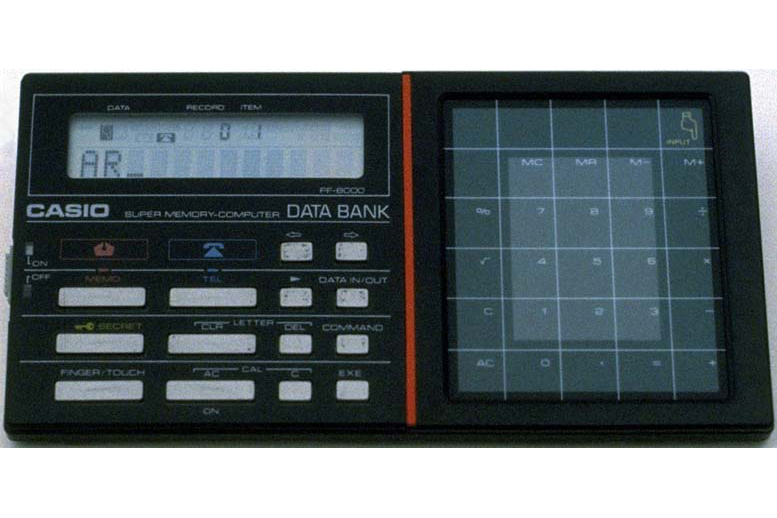 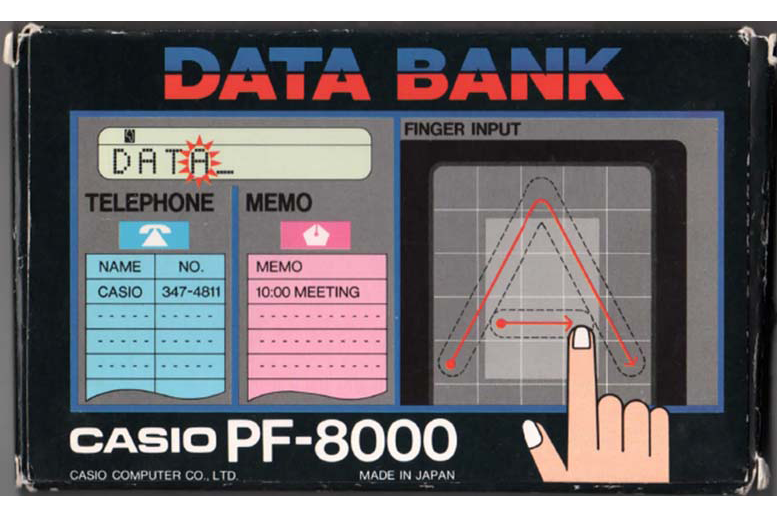 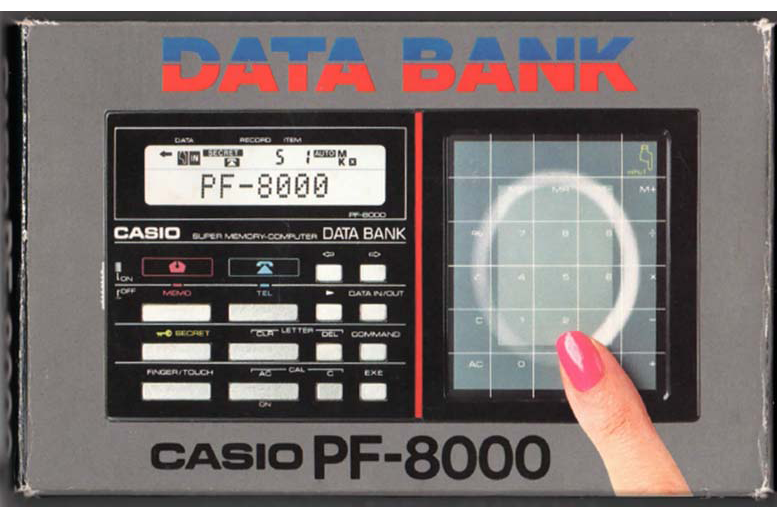 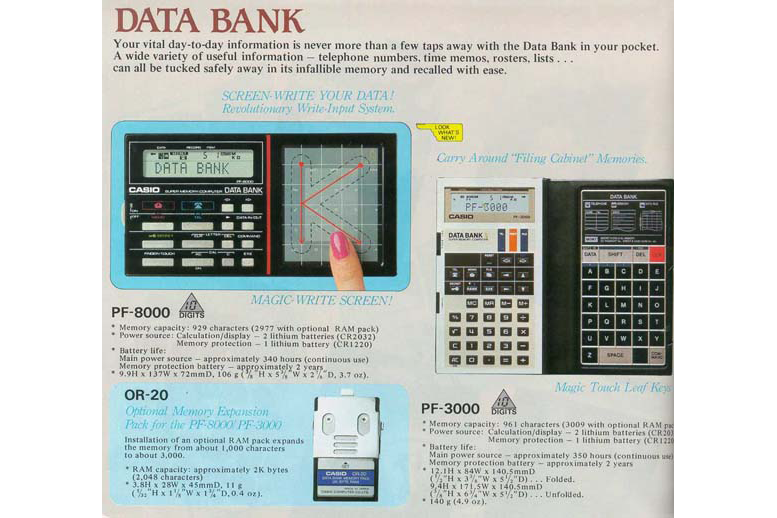 Bill Buxton's NotesThis is a wonderful PDA that I purchased in 1984, the year it was released. It was remarkable in that one could enter data either by using the mechanical keypad, or by printing the characters, one on top of the other, on the touch pad on the right. In this latter regard, it used the same basic technology as its sibling, the Casio AT-550 Calculator Watch, which is also in the collection. There are a few details, positive and negative that are worth delving into. First, notice that the touch pad has a labeled grid printed on it. That is because it could be used in two ways. This is because you could enter numbers into the calculator in two ways:
How touches were interpreted, as gestures or key pushes, was determined by what mode you requested. What is interesting is how this illustrates the way that a touch pad can support different types of interaction, even on the same device. Another thing that was interesting about this device is that, when entering names – such as looking up someone's phone number in the address book – it had good auto completion. The fact is, this was a really good electronic organizer from all kinds of perspectives. So why did it take another 12 years – until 1996 and the release of the original Palm Pilot – for PDAs to really take hold? I would argue that one of the primary reasons had nothing to do with the primary features of the organizer. Rather, it was the lack of integration with your PC, which meant that you had to manually enter everything into the device, what was in it was gone if you lost it or it broke, since there was no back-up, and there was no way to keep it synchronized with the address list, calendar, etc. that you had on your PC. That is, it functioned in a separate universe. There is a key lesson here which I think is going to come back and bite us again with the gadgets of today, namely, without tight and seamless integration with the rest of the ecosystem, the potential of the devices that we have will not be met, regardless of how well they function as an "island". Nevertheless, this was pretty cool for 1984 – the same year that the first Apple Macintosh came out – 17 Moore's Laws ago! Bill Buxton |
